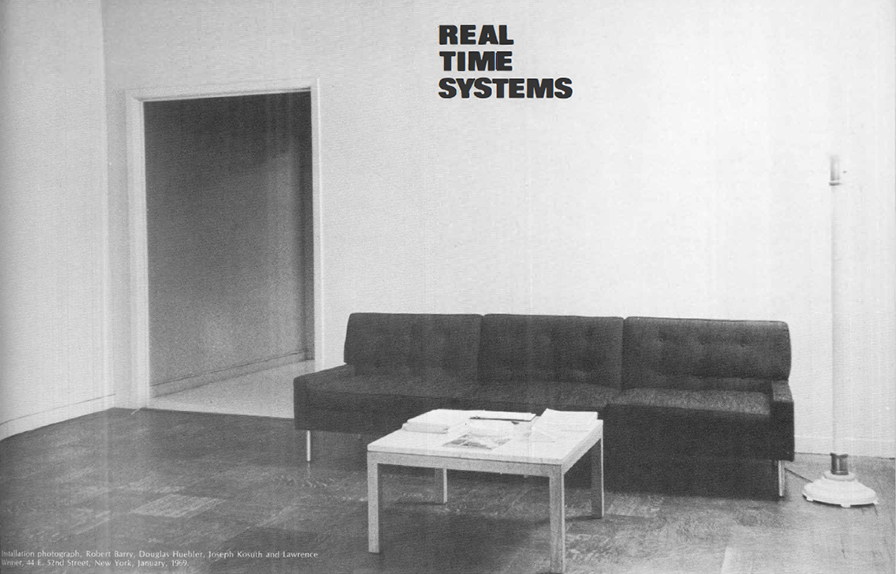Presently it will be accepted that art is an archaic information processing system, characteristically Byzantine rather than inefficient. To emphasize this cybernetic analogy, programming the art system involves some of the same features found in human brains and in large computer systems. Its command structure is typically hierarchical. At the basic level artists are similar to programs and subroutines. They prepare new codes and analyze data in making works of art.
These activities are supervised by metaprograms which consist of instructions, descriptions, and the organizational structures of programs. Metaprograms include art movements, significant stylistic trends, and the business, promotional, and archival structures of the art world. At the highest level art contains a self-metaprogram which, on a long-term basis, reorganizes the goals of the art impulse. The self-metaprogram operates as an undetected oversee, establishing strategies on all lower levels in terms of societal needs. Because we have no comprehensive picture of human life, these needs remain rather obscure(Zeitgeist is not sufficiently teleologic to express the anticipatory monitoring function of the self-metaprogram).
…But we know that organic stability is predicated upon extensive communication networking, including memory, feedback and automatic decision-making capacities. The rudiments of such networks already exist, in the form of large-scale digital computer control systems, SAGE, the first computer-based air defense system, Project Mercury, the first real time digital support system for space flight, Telefile, the first online banking system, and SABRE, the first computerized airline reservation system are a few of many operating real time systems which gather and process data from environments, in time to effect future events within those environments…
